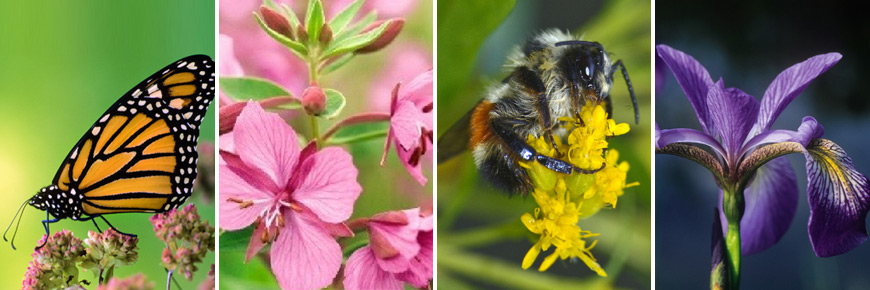by Renate Sander-Regier
Pollinator gardens play important roles in the lives of pollinators, as well as songbirds, and many more species of insects.
A recent CBC news story reveals that 50 species of insects have been identified for the first time in Fundy National Park, New Brunswick. Those new insects include wasps, flies and bees.
Over half of those species were identified in the park’s pollinator garden, located near the Visitor Centre. The garden measures 400 square metres, with approximately 80 species of regionally native plants growing in that space.
The Fundy National Park website defines a pollinator garden as “an outdoor space that is carefully planned to be a welcoming habitat for pollinators. The most important element of a pollinator garden is for it to include plants that are native to your region.”
The pollinator garden at the park was established to support pollinators and other wildlife, and also to inspire visitors to add native plants to their gardens. The park’s garden is fairly large, but as pointed out on the park website, native plants and pollinator-friendly practices can make a difference in any outdoor space, no matter how small.
As Neil Vinson, Fundy National Park’s resource management officer points out in the CBC article, “Without native plants, we don’t have bugs. Without bugs, we don’t have birds. And it just goes up the line from there. …We’re part of that food chain as well. And without them, we suffer as well.”
We could add that with native plants, and the diversity of bug and bird life that thrives in their presence, we also thrive.
More info
Read the full CBC news story: Dozens of new insect species discovered at Fundy National Park
Read more about the pollinator garden at Fundy National Park: Pollinator garden project
And how to do it: Plant a Habitat
